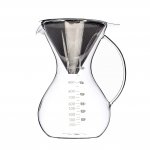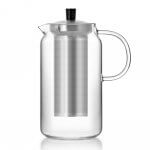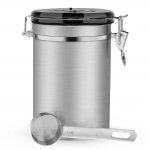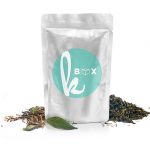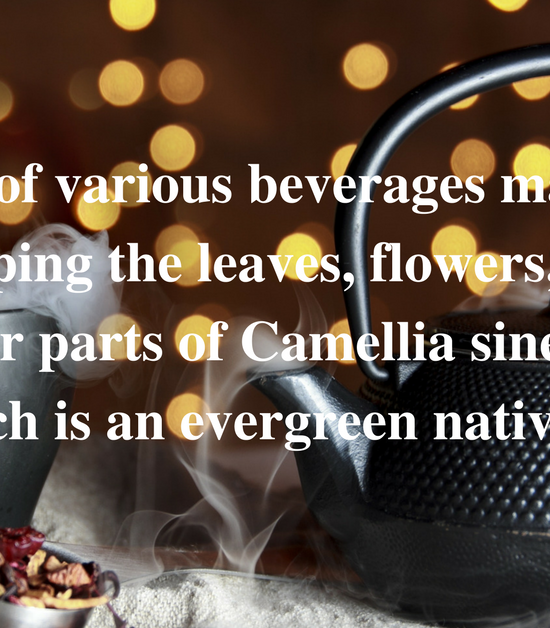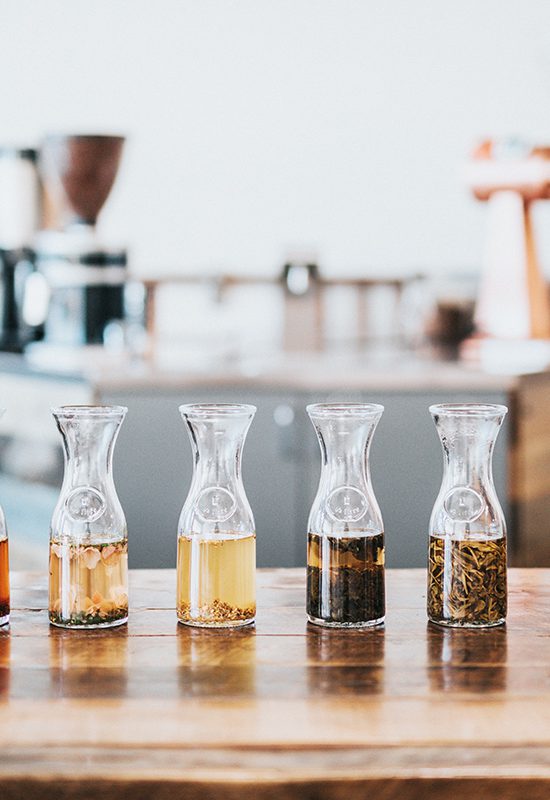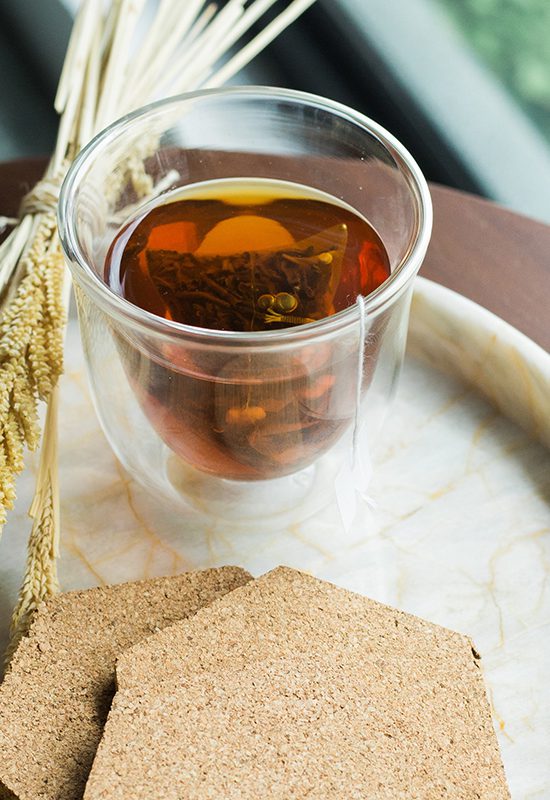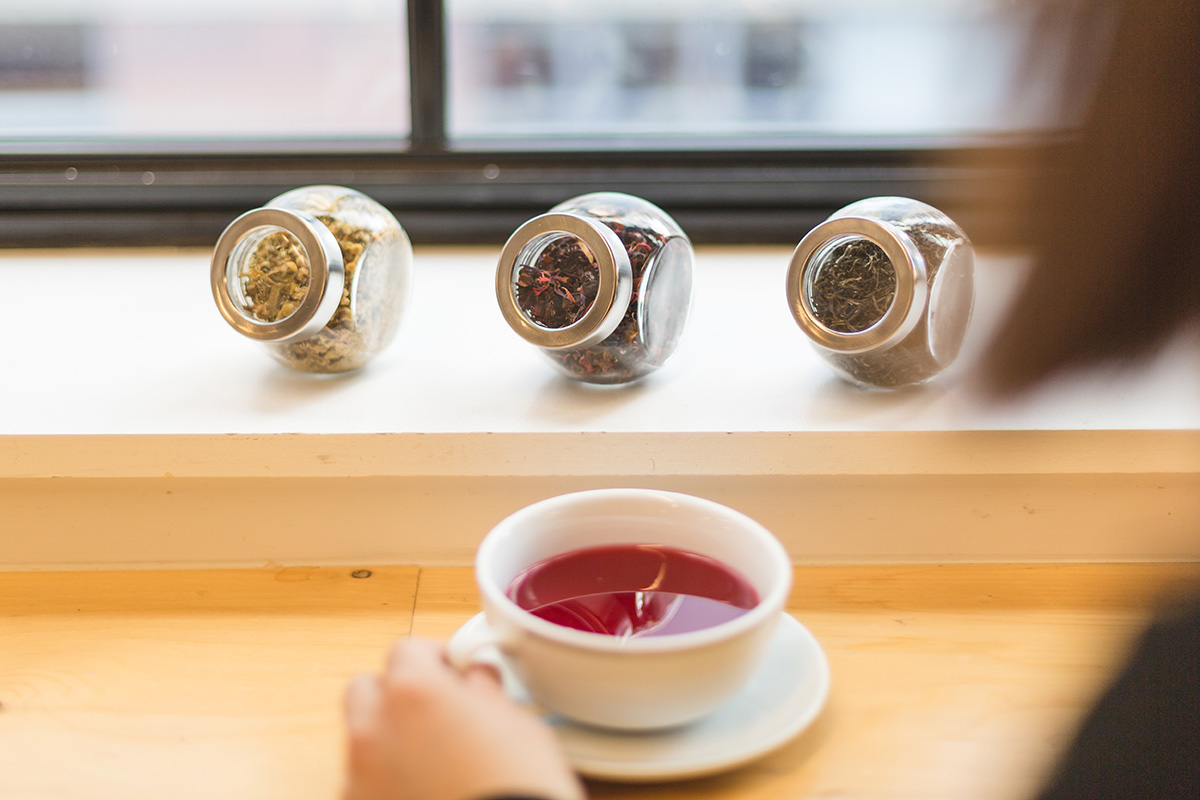
Get to Know the Four Main Types of Tea – White, Green, Black, and Oolong
Just like other beverages, there are also different types of tea. Liquor is the term used to refer to brewed tea. This includes essential oils, caffeine, and polyphenols. Essential oils in tea are what make the tea flavorful and aromatic while caffeine gives that energy boost to help you last the day or night.
Polyphenols, on the other hand, are related to antioxidants which fight free radicals to keep our body healthier and away from diseases.
All real tea varieties come from the plant Camellia sinensis, and there are only four types. These are the white, green, black, and oolong tea. Those that are called teas but do not come from Camellia sinensis are often called herbal teas or tisanes.

Herbal teas or tisanes are caffeine-free. They contain a decoction of fresh or dried flowers, fruits, leaves, seeds, and herbs that are steeped in boiling water. Although these are technically not teas, they have formed a significant part of the tea industry and culture in the world.
This article will only focus on the real varieties of tea, their origins, characteristics or descriptions, and processing methods. It’s important to know that the types of teas are categorized by the way they are processed or the varying levels of oxidation.
Oxidation refers to the natural process where enzymes in tea leaves interact with oxygen. This chemical reaction results in the browning of tea leaves, which then produces the flavor and aroma in finished teas. When the tea leaves are exposed to oxygen for a longer period, the leaves become darker, and the flavor profile becomes more developed.
Sometimes, the oxidation process could be stopped, could be deliberately initiated, or controlled and then stopped. It depends on the type of tea. There are different methods used to control oxidation. These involve rolling, shaping, and crushing to hasten oxidation while steaming, firing, and roasting the tea leaves to stop it.
So to know more about the four types of teas and their differences, read on.
1. White Tea
Origin
White tea is considered the pinnacle of teas in China and is mainly produced in Zhenghe, Fuding, Songxi, and Jianyang areas of Fujian province.
Description
White tea is the rarest, most delicate, and most refined of all tea types. It has green-gray colored leaf buds with fine white “pekoe” hairs that cover its leaves. Its flavor profile is usually floral, grassy, fruity, apricot, citrus, mild, sweet, and subtle.
Brewed white tea can be pale yellow to light orange.

Processing
Most white teas are still handpicked and hand-processed. Farmers choose from different varieties that will best suit white tea. The best ones come from fat buds with plenty of silvery hairs and thick leaves.
White tea can be harvested during spring, autumn, or summer season. However, the taste of the finished product varies largely on when it is picked. Spring season is the best time to harvest as tea is very abundant at this time and are of high quality. Usually it is picked many times and the first two rounds of harvest produce the sweetest and the fattest shoots. Autumn is the second best time to harvest, while summer is the worst.
After harvesting, white tea undergoes heavy withering process. This means that fresh leaves are just left to dry in dormant condition for up to 3 days. Tea-makers have a very stringent task in white tea processing because they need to thoroughly check and facilitate the changes in tea leaves and factors like temperature, humidity, air, and light to achieve the desired results.
With the right conditions and careful monitoring, tea enzymes produce sugars and theanine in white tea leaves which results in its naturally sweet flavor. While there are already artificially-withered tea leaves, those that are naturally-withered still have the best flavor and aroma. Natural withering takes too much time though so it is not often used anymore.
Drying is also another way to process white tea. Some production regions use this as it is more efficient for them than withering. This involves oven-baking the withered leaves several times to reduce moisture.
In summary, white tea processing involves picking the right leaves, spreading them out to wither until moisture reduces to 20%, then drying even further. There’s very minimal heating and no rolling.
2. Green Tea
Origin
Just like white tea, green tea comes from the same variety of Camellia sinensis. Although it mainly originated in China, different types of green tea are now cultivated and produced in many parts of the world like Japan, India, Sri Lanka, Taiwan, New Zealand, and even Hawaii, and South Carolina.
Description
Even though green tea comes from the same plant variety, not all green teas taste the same. Just like with white tea, its taste is largely affected by the processing method, the part of the plant that was plucked, which season it is harvested, how it is treated (whether organically-grown or with chemicals), and what kind of heat is applied.
The taste also depends on the type of environment the plant grows in – whether it’s tropical, cool, hot, or mountainous, and the different plants that surround it (if there are any).
Typically, a brewed green tea is color green, yellow, or light brown. The flavor profile can be grass-like and toasted (when pan-fired) and vegetal, sweet, and seaweed-like (when steamed). Most green teas are light in color and not very astringent when brewed correctly.

Processing
The most widely-consumed types of green teas are from China and Japan and these two countries have different methods of processing. China’s method is pan-fired while Japan’s is steamed. Other countries that also cultivate and produce green tea just adopted the method they desired.
Pan-firing in China involves heating tea leaves in a basket, a pan, or a mechanized rotating drum. This is done to stop the oxidation process. Depending on the style of tea being produced, tea leaves may be pan-fired once or several times.
Pan-firing can be over gas flame, charcoal, or electric heat depending on the flavor tea makers want to produce. In this case, the flavor can vary largely based on the number and the type of firings done. Chinese pan-fired green teas usually come out yellow-green or dark-green with a grassy, earthy, and roasted flavor.
Japan’s steaming process comprises brief steaming within hours of plucking to stop the oxidation process and to produce the vibrant green color of the tea leaves and the brewed tea. Sometimes, green tea is also shade-grown during its cultivation process or roasted during its processing in order to bring out additional flavors.
So basically this is how the processing goes: Steaming/Roasting -> Cooling -> 1st Rolling -> 1st Drying -> Final Rolling -> Final Drying
3. Black Tea
Origin
Black tea is a unique variety since it comes from two different forms of Camellia sinensis – the Camellia sinensis sinensis and Camellia sinensis assamica.
Camellia sinensis sinensis is mainly used in China and East Asian countries and it produces shorter leaves. Camellia sinensis assamica is primarily used in some parts of Sri Lanka and India and it produces larger leaves.

Description
Black tea leaves are fully or 100% oxidized which is why they are black in color. Also, black tea has stronger flavor than the rest of the varieties. Black tea is known to retain its flavor for several years unlike green tea which usually loses its flavor within a year.
When black tea is brewed, the color can range from amber to red to dark brown. The flavor profile can range from savory to sweet, malty, earthy, spiced, or nutty depends on how long it’s oxidized and heat-processed. Compared to other varieties, black tea is generally more astringent and bitter. However, if one knows how to brew it correctly, the flavor should come out smooth.
Processing
The methods of processing differ from one region to another but the basic steps include withering, rolling, oxidizing, and drying. There are 2 primary methods that are used in black tea processing. One is the Orthodox method and the other one is Cut, Tear, Curl method (CTC).
With the Orthodox method, more care is placed into tea leaves. Once the leaves are picked, they are allowed to wither in warm air for up to 18 hours then they are rolled into a particular machine to gently press and twist the leaves and begin the oxidation process. The process can take several rounds.
The leaves are cut and then exposed again to the air. This time it’s a climate-controlled environment to continue oxidation. When the leaves reach the proper oxidation level, they are put into a machine to dry and this stops the oxidation process.
Cut, Tea, Curl or CTC method dates back to around 1950s when the teabag industry started gaining popularity. CTC is used in order to come up with a more efficient processing and a production of smaller cut tea leaves. In this method, rolling is skipped; instead, the leaves are minced and broken apart using a machine with rotating blades.
In summary, the processing goes like this (Orthodox): Withering -> 1st Rolling -> Oxidizing/Fermenting -> Drying while for CTC: Withering -> Cutting/Tearing/Curling -> Oxidizing/Fermenting -> Drying
4. Oolong Tea
Origin
Oolong Tea is known to have originated in China and Taiwan. Legend has it that the Chinese gave the name “wulong” to mean “black dragon” because the leaves are big and dark, heavily oxidized and twisted into shapes that resemble the mystical Chinese dragon.
Different types and styles of oolong are already cultivated and produced in some parts of the world today including Japan, Sri Lanka, Thailand, and New Zealand.
Description
The appearance, shape, and flavor of oolong are widely affected by how it is grown and its processing method. Just like the rest of the tea varieties, processing may differ from region to region.
In terms of oxidation, oolong falls somewhere in between green tea (barely oxidized) and black tea (fully oxidized) so it’s often called partially oxidized. This is why you will taste some oolong teas that are more of fresh green tea in flavor and others that taste more like a malty black tea.
The color of the leaves and the brewed tea can be green to golden to brown and the flavor profile can range from light to full-bodied, floral to grassy, and sweet to toasty.
Despite its seeming similarity to green and black tea, oolong is neither a green tea nor a black tea variety. It is really a category or a variety of tea on its own. One way to differentiate it from the rest is through its oxidation and shape.

Processing
Oolong tea leaves are traditionally rolled, twisted, or curled into tight balls or thin strands. Rolling is such a crucial step in processing because it can alter or change the appearance, color, and aroma of oolong.
First comes the usual harvesting or picking the tea leaves followed by the withering process. Withering makes the tea leaves soft so that they won’t break when they’re ready to be rolled or shaped.
The tea leaves then need to be cooled after withering. When they’re cool, they begin to wilt and flatten. And when they begin changing shape, they are ready for rolling.
After light rolling, the tea leaves undergo oxidation usually anywhere from 8%-80% level. With this, the color and flavor of the tea depends on the tea master or tea producer. Heat is then applied through roasting, and then final rolling comes in in order to give the final taste or flavor of the oolong tea.
Once the shaped oolong tea leaves are rolled, they will undergo drying to reduce the moisture content.
In summary, it looks like this: Withering -> Cooling -> Light Rolling -> Oxidation -> Roasting -> Final Rolling -> Drying.
—–
We hope you’ve learned something from this tea guide! It’s always nice to know what kind of tea you are drinking so that you can adjust your taste as necessary and you can also experiment on other types of teas.
Whichever tea best fits you, enjoy your tea break!
*Pin for later.


